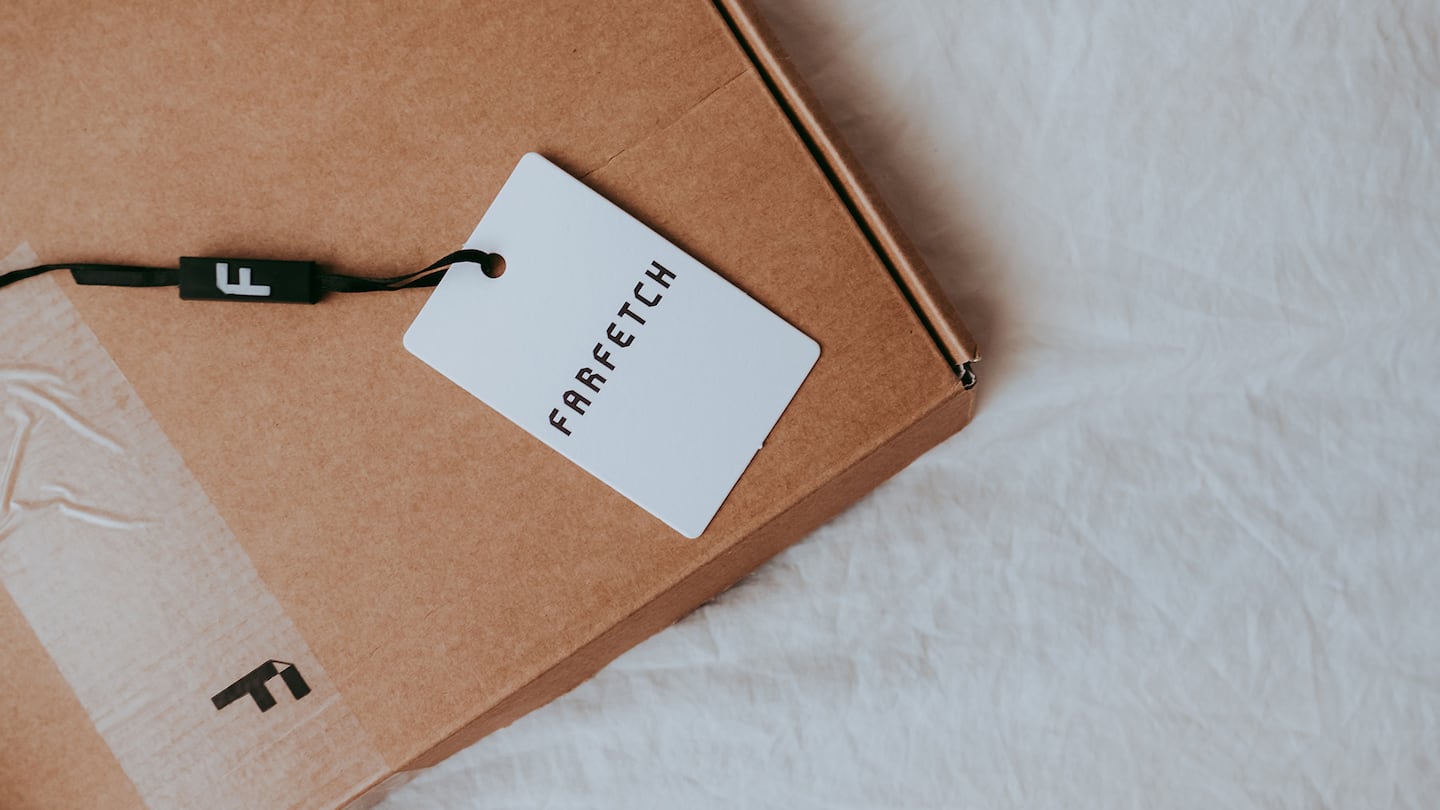
The Business of Fashion
Agenda-setting intelligence, analysis and advice for the global fashion community.

Agenda-setting intelligence, analysis and advice for the global fashion community.

Farfetch’s sale on Monday to Seattle-based South Korean e-commerce giant Coupang could give the online luxury marketplace access to two resources it previously lacked: scale and time.
In the immediate term, the deal provides a $500 million loan, helping Farfetch avoid a bankruptcy that would likely have led to an exodus of talent and permanently soured relationships with the brands and boutiques that sell on the platform.
But beyond next month’s payroll, the acquisition also presents an opportunity for Farfetch to do what founder and chief executive José Neves has been promising investors for months: streamline operations and focus on reviving growth in its core marketplace.
Farfetch had made a string of acquisitions that added new revenue streams over the years, including department store Browns, sneaker reseller Stadium Goods and brand incubator New Guards Group. But these ventures also added to the company’s annual losses, and proved even more vulnerable to this year’s downturn in luxury spending than the main marketplace business. The company’s revenue dropped 1 percent in the second quarter of the year, mostly pulled down by sales at New Guards Group, which operates Off-White, falling more than 40 percent during the period.
ADVERTISEMENT
For the much larger Coupang, which sells everything from clothing and beauty to food and electronics, and even operates a restaurant delivery service, Farfetch’s messy balance sheet is less of a concern, at least in the short term. Known as South Korea’s answer to Amazon, Coupang reported $20.6 billion in net revenue in 2022, to Farfetch’s $2.3 billion.
Coupang also operates a vastly larger logistics network, and reaches far more customers: in 2022, Farfetch had nearly 4 million customers who shopped at its site in the previous twelve months. Coupang had 18 million during that same period.
By that logic, Coupang represents something like a best-case scenario for Farfetch and Neves, who remains at the head of the company he founded in 2007 (less so investors and financial backers including Richemont and Alibaba, who were wiped out in the deal). One could imagine a world where Coupang’s Rocket delivery program whisks Farfetch orders to customers’ doorsteps the same day they’re ordered, and Farfetch gets a leg up in South Korea, where consumers spend more per capita on luxury goods than almost any other country.
Pessimists would note that the future sketched out above requires a few leaps of faith. Coupang has no expertise in selling luxury goods, specialising in wool-blend overcoats for as little as $20, not $16,000 Brunello Cucinelli cashmere jackets. As Amazon has demonstrated, it’s not so easy for an “everything store” to cater to the luxury consumer. Coupang’s stock fell 5 percent on Monday following the news that it was acquiring Farfetch.
Coupang will also be looking to cut costs at money-losing Farfetch; Coupang is on pace to turn its first net profit this year since the company’s IPO in 2021. It will likely attempt to slim down Farfetch through economies of scale and back-end redundancies, but customers will be quick to pick up on any decline in service or quality. Farfetch will have to maintain control over its customer experience for the tie-up to be successful, experts say.
Whatever the risks, it’s clear from the last few weeks that Farfetch had few, if any other options. It’s not the only luxury e-commerce retailer facing a reckoning. Retail giant Frasers Group is in talks to buy Matchesfashion for between £50 million to £100 million, according to a report in Sky News. Private equity firm Apax Partners bought a majority stake in Matchesfashion in 2017 at a $1 billion valuation. Yoox Net-a-Porter’s fate is also uncertain, as Richemont said on Monday that its deal to sell Farfetch a 47.5 percent stake is off.
Of the three, Farfetch may have the clearest path forward, experts say. If it can survive the luxury downturn and successfully integrate with its new owner, the marketplace may yet fulfil Neves’ vision of a dominant luxury e-commerce player, albeit relying on Coupang’s logistical and marketing resources to do it.
“Operationally and technologically Farfetch is going to become more advanced coming out of this,” said Benjamin Bond, a principal consumer growth strategy consultant at management consulting firm Kearney. “That could be a call for other luxury retailers to step up their game even further.”
ADVERTISEMENT
Coupang’s challenge will be to rein in a company with a long history of veering off course, without stifling the innovation that made Farfetch the biggest player in online luxury in the first place.
Farfetch started out by connecting high-end specialty boutiques and their curated inventories of designer frocks to customers worldwide. The company would list retailer’s goods on its site, orders would be fulfilled through those stores and Farfetch would take a commission from each order. In 2015, Farfetch launched its white label service, where it powers web and mobile storefronts for retailers like Harrods and Neiman Marcus, and brands from Thom Browne to Chanel.
As Farfetch took more than $800 million in venture capital from the likes of YNAP-founder Natalie Massenet’s Imaginary Ventures and François Pinault’s Group Artemis leading up to its IPO in 2018, those business lines weren’t enough. The company looked to replicate Amazon’s ubiquity and dominate all areas of luxury commerce, from brand building to beauty.
It entered physical retail when it bought UK-based specialty multi-brand retailer Browns in 2015. Then it tried its hand at the niche but growing sneaker resale market, and more physical retail, with the acquisition of Stadium Goods in 2018, at the height of the streetwear boom. In 2019, it took on the task of operating standalone brands, including designing and and manufacturing, when it acquired New Guards Group. Farfetch opened its beauty arm in April 2022, which included the $50 million acquisition of Violet Grey, a cult LA retailer known for putting brands like Augustinus Bader on the map.
Unlike with the marketplace, Farfetch struggled to turn niche businesses into multi-billion-dollar retail propositions. Violet Grey was only a $20 million-a-year business when it was acquired, and beauty sales never came close to justifying the expensive process of integrating Violet Grey’s e-commerce into its platform. Farfetch closed its beauty division in August and is selling off Violet Grey.
Farfetch’s failed deal to acquire YNAP was its latest attempt to grow its business through an expensive and complex acquisition. That deal would have added more than $3 billion in gross merchandise volume to Farfetch’s core marketplace, but also would have added a loss-making company operating under a different business model to its books.
“Every transaction [Farfetch] made (or tried to make) was extremely complicated, both in terms of financial details and operational details,” Tom Nikic, equity analyst at Wedbush, wrote in a research note after the Coupang deal was announced. “Essentially, [Farfetch] took what should have been an extremely simple business model and bogged it down with unnecessary complexity.”
While Coupang attempts to transform Farfetch into a profit-generating business, it will reap other benefits. Farfetch can help Coupang penetrate the $400 billion global personal luxury goods market, the company noted in a statement on Monday.
ADVERTISEMENT
Farfetch also opens a path for Coupang to permeate the US market, where it is listed as a public company, without having to compete directly with e-commerce giants like Shein and Temu, which have exploded in the region in recent years selling lower-priced goods online.
“It’s a brand building exercise for Coupang, whose name probably isn’t that well known [in the US],” said Bill Detwiler, managing partner at Fernbrook Capital Management, which invests in e-commerce brands. “There’s a trickle-up effect if Coupang builds a bigger business in the US market. Everyone’s going to notice it, including analysts, mutual fund managers and people that are buying public stocks.”
The London-based luxury e-commerce giant, which has lost 97 percent of its market value in the last two years, has suffered from lack of focus, writes Imran Amed.
EU regulators are expected to give the go-ahead for Richemont to spin-off Yoox Net-a-Porter in a joint venture with rival Farfetch. But in the 14 months since the deal was announced, Farfetch has lost 90 percent of its market value with significant implications for the transaction and the wider fashion ecosystem.

Malique Morris is Direct-to-Consumer Correspondent at The Business of Fashion. He is based in New York and covers digital-native brands and shifts in the online shopping industry.
The British musician will collaborate with the Swiss brand on a collection of training apparel, and will serve as the face of their first collection to be released in August.
Designer brands including Gucci and Anya Hindmarch have been left millions of pounds out of pocket and some customers will not get refunds after the online fashion site collapsed owing more than £210m last month.
Antitrust enforcers said Tapestry’s acquisition of Capri would raise prices on handbags and accessories in the affordable luxury sector, harming consumers.
As a push to maximise sales of its popular Samba model starts to weigh on its desirability, the German sportswear giant is betting on other retro sneaker styles to tap surging demand for the 1980s ‘Terrace’ look. But fashion cycles come and go, cautions Andrea Felsted.